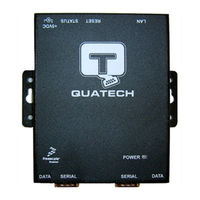Quatech SSEW-100D Manuals
Manuals and User Guides for Quatech SSEW-100D. We have 4 Quatech SSEW-100D manuals available for free PDF download: User Manual, Quick Start Manual, Specifications
Quatech SSEW-100D User Manual (98 pages)
Quatech Serial Device Server User's Manual
Table of Contents
Advertisement
Quatech SSEW-100D Quick Start Manual (4 pages)
High Performance Serial Device Servers
Table of Contents
Advertisement
Quatech SSEW-100D Specifications (2 pages)
Wireless Device Servers



